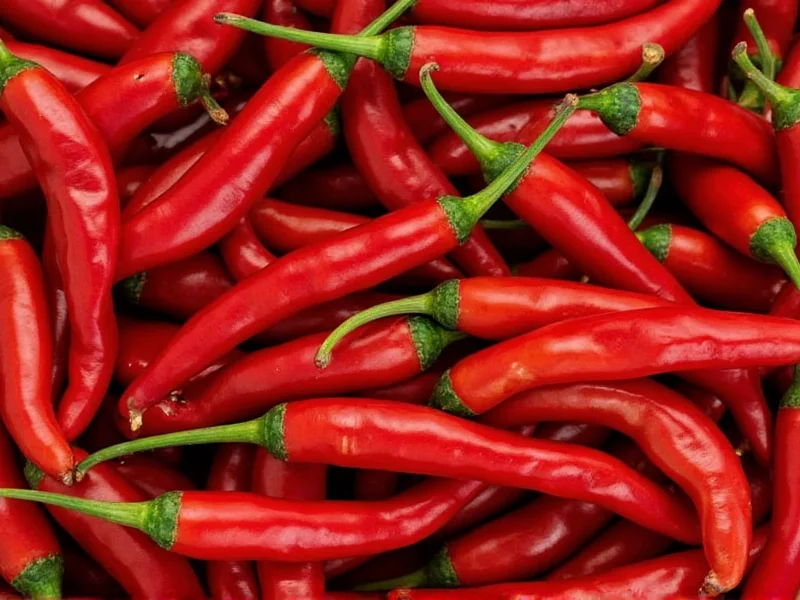Discovering your chili has become uncomfortably spicy can ruin a meal you've精心 prepared. The good news is several science-backed methods can rescue your dish without starting over. Understanding how to neutralize spiciness comes down to knowing how capsaicin—the compound responsible for heat in chili peppers—interacts with different ingredients.
When chili becomes too spicy, your immediate goal should be to counteract the capsaicin. This oil-soluble compound binds to pain receptors in your mouth, creating that burning sensation. The most effective remedies work by either dissolving the capsaicin, neutralizing its chemical properties, or creating a physical barrier between it and your taste buds.
The Science Behind Spiciness Remedies
Capsaicin dissolves in fats and alcohols but not in water, which explains why drinking water often makes spicy food feel hotter. Dairy products work exceptionally well because casein, a protein in milk, binds to capsaicin and washes it away. Acidic ingredients help break down capsaicin molecules, while sugars can counterbalance heat perception by engaging different taste receptors.
Immediate Fixes for Overly Spicy Chili
When you realize your chili has become too spicy, act quickly with these proven solutions:
Dairy-Based Solutions
Dairy remains the most effective remedy for spicy food. The casein protein in dairy products binds to capsaicin and helps remove it from pain receptors. For best results:
- Add full-fat yogurt or sour cream (1-2 tablespoons per serving)
- Stir in milk, cream, or coconut milk (¼ cup increments)
- Top with shredded cheese that melts into the dish
- Use heavy cream for richer dishes like curries or stews
Acidic Counteragents
Acids help break down capsaicin molecules and provide a balancing flavor:
- Lemon or lime juice (start with 1 teaspoon)
- Vinegar (apple cider works well for chili)
- Tomato products (sauce, paste, or diced tomatoes)
- Pickled ingredients for tangy balance
Sweet and Starchy Balancers
Sugars counteract heat perception by engaging different taste receptors:
- Honey or sugar (½ teaspoon at a time)
- Shredded carrots for natural sweetness
- Corn or beans to dilute spiciness
- Rice, bread, or potatoes served alongside
| Remedy Type | Best For | How Much to Add | Time to Work |
|---|---|---|---|
| Dairy (milk, yogurt) | Creamy soups, curries, sauces | ¼ cup per serving | Immediate |
| Acid (lemon juice, vinegar) | Tomato-based dishes, salsas | 1-2 tsp per serving | 1-2 minutes |
| Sugar/honey | Asian dishes, marinades | ½-1 tsp per serving | 2-3 minutes |
| Dilution (beans, corn) | Chili, stews, soups | ½ cup per serving | 5-10 minutes simmering |
Preventative Measures for Future Cooking
Avoiding overly spicy chili begins with proper preparation techniques:
- Start with less: Begin with half the recommended chili amount, then adjust
- Remove seeds and membranes: These contain most capsaicin in peppers
- Toast spices gently: High heat can intensify spiciness unexpectedly
- Test as you go: Taste after each addition of spicy ingredients
- Keep remedies handy: Have dairy, acid, and sweeteners ready during cooking
What NOT to Do When Fixing Spicy Food
Certain common approaches actually worsen the situation:
- Don't add more heat: Trying to "balance" with more spices usually backfires
- Avoid excessive water: Water spreads capsaicin rather than neutralizing it
- Don't over-dilute: Adding too much extra liquid can ruin texture and flavor balance
- Don't ignore timing: Some remedies need simmering time to integrate properly
Special Considerations for Different Dishes
The best remedy depends on your specific dish:
- Tomato-based chili: Add tomato paste or diced tomatoes to dilute while maintaining flavor profile
- Creamy soups: Stir in additional cream or coconut milk for richness
- Dry rubs or marinades: Create a new batch without spice and combine
- Rice dishes: Serve with plain rice and cooling raita or yogurt sauce
Long-Term Solutions for Spice Management
Develop better control over spiciness with these professional techniques:
- Create a spice reference guide: Note how different peppers affect your recipes
- Use calibrated measuring tools: Tiny differences in chili powder measurements matter
- Make spice blends in advance: Control ratios before adding to dishes
- Understand pepper heat scales: Know the Scoville units of peppers you use











 浙公网安备
33010002000092号
浙公网安备
33010002000092号 浙B2-20120091-4
浙B2-20120091-4